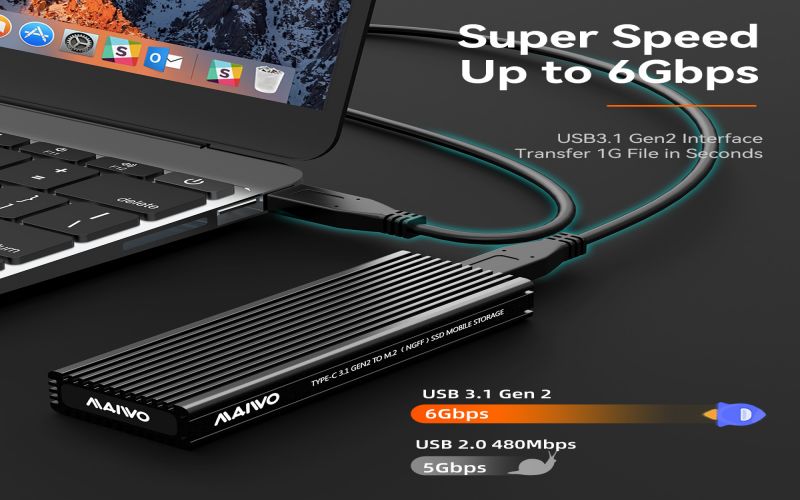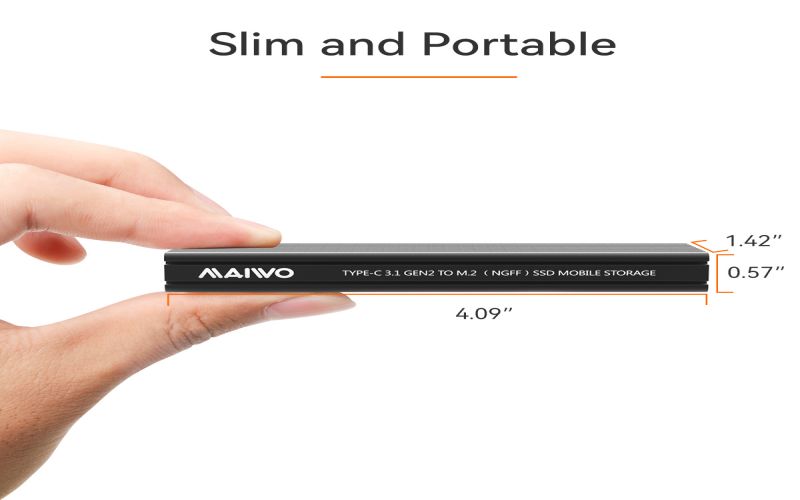With the rise of solid-state drives (SSDs) in the storage industry, it is crucial to determine whether the traditional hard disk enclosures are suitable for these modern storage devices. This article delves into the compatibility of hard disk enclosures with SSDs, examining their similarities, differences, potential advantages, and drawbacks.
Hard disk enclosures are external casings designed to house hard disk drives (HDDs) and provide connectivity options, typically through USB or eSATA ports. They offer convenience by allowing users to easily access and transport their data. These enclosures often come equipped with portability features, such as shock resistance, rugged designs, and additional cooling mechanisms.
SSDs, on the other hand, are storage devices that use flash memory to store data, offering faster read and write speeds compared to traditional HDDs. They have no moving parts, making them more durable, energy-efficient, and resistant to mechanical failures. SSDs have gained popularity in recent years due to their improved performance and reliability.

Generally, hard disk enclosures are compatible with SSDs as they support the necessary interface connections (e.g., SATA) for SSD installation. However, a crucial consideration is the physical form factor. Enclosures may be designed specifically for either 3.5-inch or 2.5-inch hard drives. This distinction is important because most SSDs conform to the 2.5-inch form factor, which means they can fit into enclosures intended for 2.5-inch HDDs.
Furthermore, many enclosures come with internal fixtures or adapters to accommodate both 3.5-inch and 2.5-inch drives, ensuring compatibility for SSD users. It is essential to verify the physical specifications and compatibility of the enclosure before making a purchase.
While hard disk enclosures can house SSDs, it's important to note that the performance benefits of SSDs might not be fully realized when used externally. The speed and performance improvements that SSDs offer may be limited by the external connection interface, such as USB, which can introduce bottlenecks due to lower data transfer rates compared to internal connections like SATA or NVMe.However, some enclosures now come with USB 3.1 Gen 2 or Thunderbolt interfaces, which provide faster data transfer rates and ensure better performance for SSDs. These enclosures maximize the potential of SSDs and enable users to experience improved read and write speeds.

Using hard disk enclosures for SSDs offers various advantages, such as portable storage, data mobility, and protection against physical damage. Enclosures provide an extra layer of durability and protection for valuable data stored on SSDs. They also offer the flexibility to connect SSDs to different devices.
However, there are a few drawbacks to consider. Firstly, the speed limitations imposed by the external interface can hinder the performance benefits of SSDs, as mentioned earlier. Additionally, the additional hardware required (the enclosure) can add to the overall cost, potentially reducing the cost-effectiveness of SSDs compared to internal installations.
In summary, hard disk enclosures can be suitable for SSDs, particularly when considering portability, protection, and compatibility with the appropriate physical form factors. However, it is necessary to choose enclosures with high-speed interfaces to fully realize the performance advantages of SSDs. Ultimately, the decision to use an enclosure for an SSD depends on individual needs and preferences.